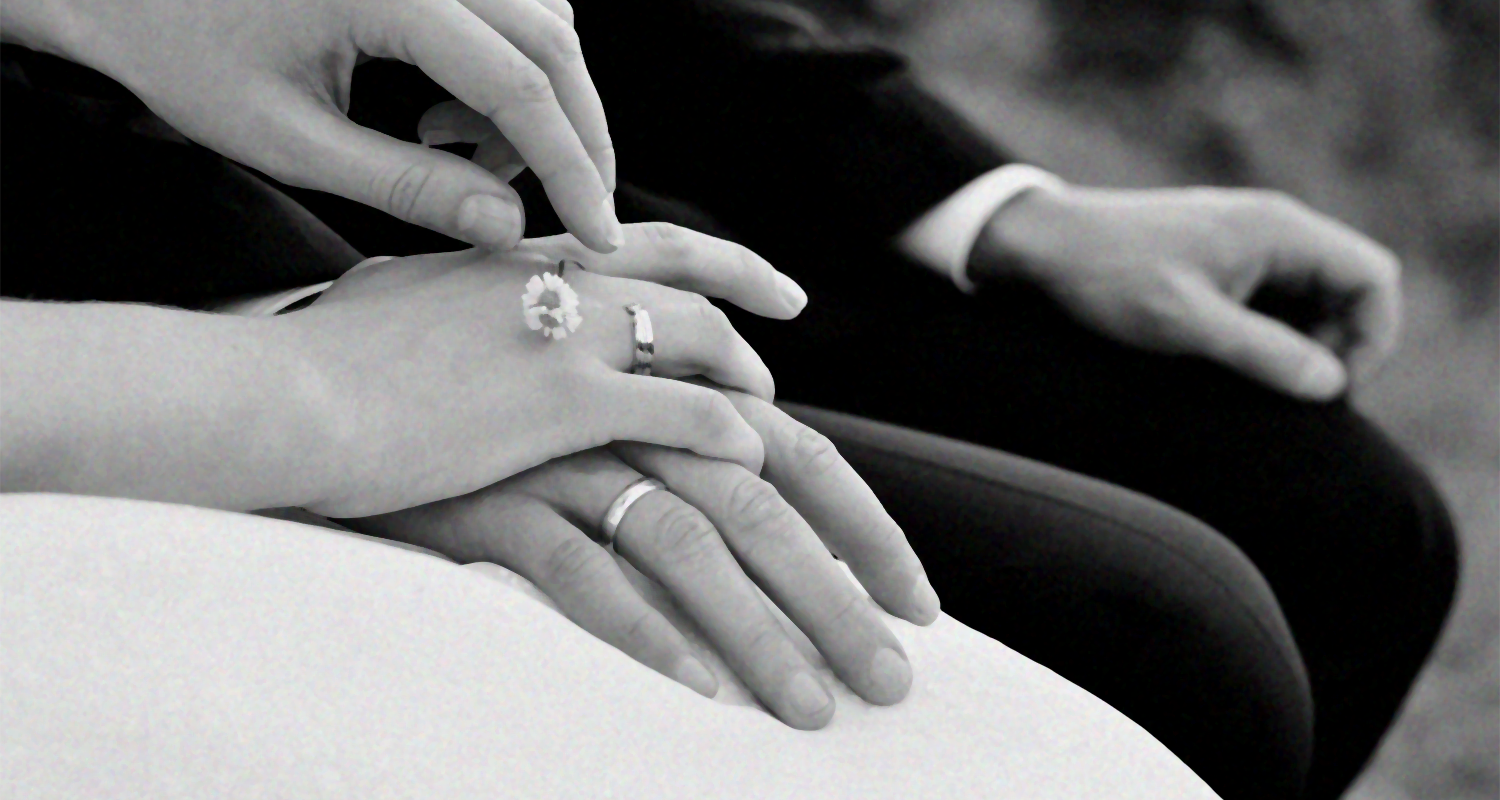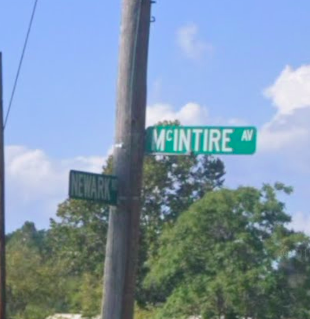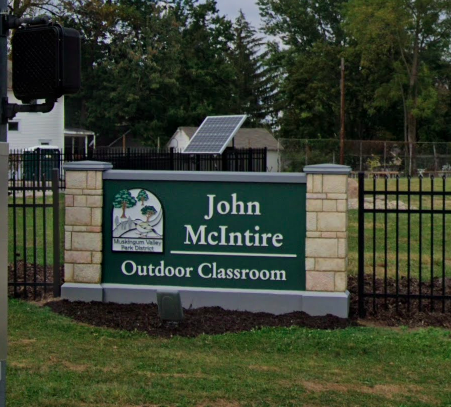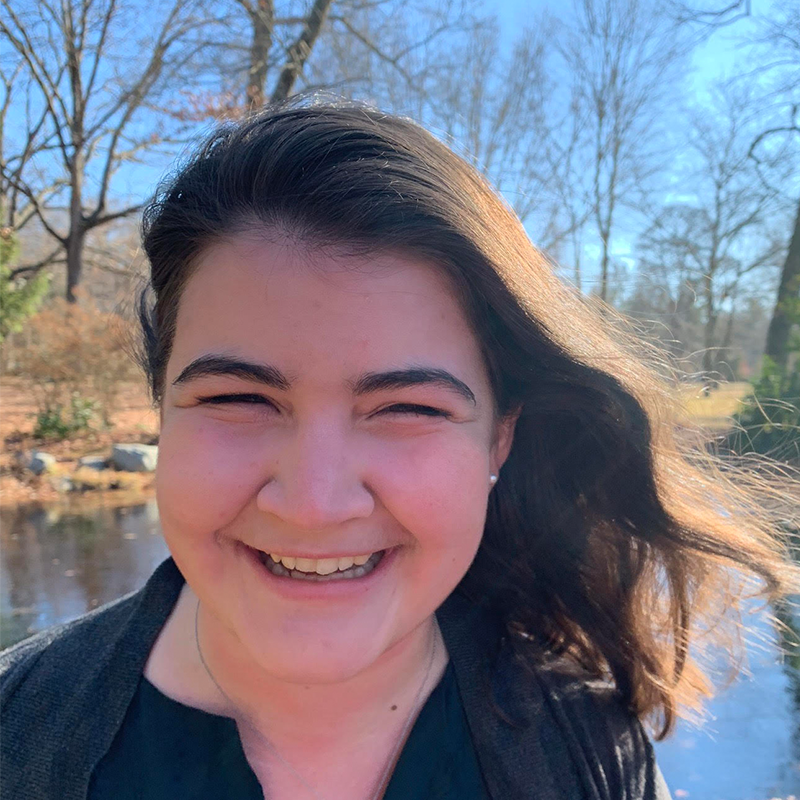“I do hereby Certify that I have this day solemnized the Right of marriage between Mr. John McIngtur (McIntyre properly) and Miss Sarah Zane agreeable to an act of assembly in such case made and provided. Witness my hand this 11th day of January 1790. Richard Yeates.”1
This is (reportedly) the first marriage license issued in Ohio County. While this union is documented in the official clerk record, it takes a mixture of old histories, family genealogy, and unsubstantiated stories and legends to piece together what the marriage of John McIntyre and Sarah Zane was potentially like.
The Couple
Sarah Zane was the second daughter of Elizabeth and Ebenezer Zane, the man who is credited with settling Wheeling as a British town.2 Regrettably, but not unusual, other than her membership in the Zane family, there is very little information or description that still exists of Sarah before her marriage.
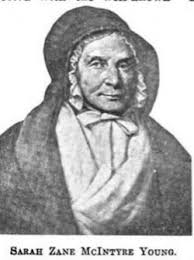
John McIntyre, also spelled McIntire, was 14 years her senior. Hailing from Alexandria, Virginia, John arrived in Wheeling in 1779 as a shoemaker.3 Most of the stories of John remember him with an injured hand from a shooting accident, either in Wheeling or while building Zane’s Trace—a road through Ohio territory.4 There are also accounts that one of John’s legs was shorter than the other, causing a limp.5
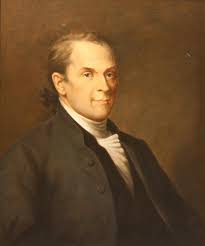
Sarah and John were married on January 11th, 1790 when John was 30 and Sarah only 16. Unsurprisingly, very little description of Sarah and John’s wedding survives to the present day. Apparently, Sarah’s parents, Ebenezer and Elizabeth, did not agree with the marriage and clearly indicated their disapproval. The wedding itself was delayed by the Zane parents for about a year. Even then, Ebenezer left for a hunting trip on Sarah’s wedding day and Elizabeth hit Sarah’s shoulder with a slipper.6 Obviously, Sarah and John got married anyway.
Different Weddings
While we do not know much about Sarah and John’s specific wedding, we can hypothesize using historical knowledge of weddings at the time. A frontier wedding in 1790 looked very different from modern weddings and their traditions we enjoy today.
For example, Sarah probably would not have worn a white wedding dress. White did not become a wide-spread fashionable tradition in western society until after Queen Victoria of England popularized the style when she was married half a century later in 1840. In addition, wedding dresses of today are generally only worn by the bride once—on her wedding day. Maybe a dress is handed down in the family and worn by subsequent brides, but generally only for weddings. However, before the mid-19th century, wedding dresses would be donned again for church Sundays and other special events, celebrations, and occasions.7
Nothing is documented about the ceremony or any type of celebration or reception after Sarah and John’s wedding. However, other documented frontier weddings in nearby areas lend a glimpse into what the festivities might have included. Many late 18th century weddings had two wedding cakes—a groom’s cake and a bride’s cake.8 For religious (or non-religious) couples today, many wedding ceremonies take place in a church, synagogue, or other place of worship. In the 18th century, especially in a remote location like Wheeling, many people did not live close to a church.9 Therefore, there is a likelihood that Sarah and John’s wedding took place in someone’s home, rather than a church.
The First Wedding…?
While John and Sarah McIntire’s union is noted and remembered as the first marriage license issued in Ohio County, it was probably not the first marriage.
Firstly, while part of a different culture and not referred to as “marriages” in the European sense, Indigenous peoples had been living in the area of Wheeling for generations, forming unions and starting families. In European history, Ohio County was officially formed in 1776, almost 13 years before the McIntire’s marriage, when it split from the District of West Augusta.10 Since courts were often far to travel to and clerks were scarce, there is a chance other Europeans were getting married in the county and just not obtaining official marriage licenses, at least right away. In fact, some accounts state that John and Sarah had their wedding ceremony in December 1789, but that they didn’t get their license until January.11
Later Life in John and Sarah’s Marriage
In a marriage where personal documentation, like diaries or letters, are scarce, it is not uncommon to know little about Sarah’s side of the union. John, on the other hand, appears in official records of Wheeling and other towns. When Wheeling was established as a town in December 1795, John McIntyre was one of the several men listed as a town trustee.12
However, only a few years later, John accompanied Sarah’s father, Ebenezer Zane, and several other men to mark and build a wagon trail—Zane’s Trace—through Ohio territory between Wheeling and present-day Maysville, Kentucky. After building Zane’s Trace, Ebenezer Zane deeded the Muskingum section (in present-day Ohio) to his brother, Jonathan Zane, and his son-in-law, John McIntire, for $100 in December 1800, as payment for their service opening the road.13
On this tract of land, John founded a town called Westbourne—the name would eventually be changed to Zanesville a few years later when the town’s post office was established. John traveled out first to Westbourne/Zanesville to build their house and Sarah followed later with more of their possessions. At the time, Zanesville was remote, so the McIntires maintained a tavern at their home, providing lodging and hospitality to travelers passing through the frontier area. One rumored guest was Louis Philippe, who would eventually become the King of France.14
While Sarah never had any biological children, she is remembered for caring for several children and providing for their education. One of these children was Amelia McIntire, John’s illegitimate daughter. There are rumors that Amelia’s mother was Lyddy Zane, Sarah’s cousin who had accompanied John on his move west to establish Westbourne/Zanesville.15
Zanesville grew and for a brief time was the State Capital of Ohio from 1810 to 1812.16 John served as a representative at the Ohio Constitutional Convention in 1802, where Ohio’s first state constitution was drafted.17 Today, John McIntire is considered one of the founding fathers of Zanesville.
John died in 1815, but Sarah went on to marry David Young, a Methodist minister, and live another 39 years.18 Both John and Sarah are buried in Zanesville, but in different cemeteries. Despite having no direct descendants (John’s daughter, Amelia, died childless only 5 years after John), Zanesville continues their legacy to this day with a street, library, and school all bearing the name McIntire.
Regardless of who was the “first,” the marriage of Sarah Zane and John McIntire opens an interesting window into the frontier life of a couple intimately tied up in the European settlement of Wheeling and Zanesville.
• Emma Wiley, originally from Falls Church, Virginia, was a former AmeriCorps member with Wheeling Heritage. Emma has a B.A. in history from Vassar College and is passionate about connecting communities, history, and social justice.
References
1 Gibson Lamb Cranmer, ed. History of Wheeling City and Ohio County, West Virginia and Representative Citizens, (Chicago: Biographical Publishing Company, 1902).
2 Benjamin E. Blumel, The Zanes: A Frontier Family, (New York, Lincoln, Shanghai: iUniverse, Inc., 2005), 85.
3 Ibid., 85.
4 Blumel, 86.; David M. Taylor, “John McIntire and Dr. Increase Mathews: A Comparison of the Founding Fathers of Zanesville,” Lecture, Zanesville 1810 Project, Pioneer and Historical Society of Muskingum County, John McIntire Public Library, Zanesville, OH, June 7, 2010, accessed January 27, 2021, https://static1.squarespace.com/static/56ffd67a2eeb810fd91ae825/t/57091d09859fd0f69a24e078/1460215058989/ZanesvilleCanalandManufacturingCo.SRV_1338577793.pdf.
5 Taylor, “John McIntire and Dr. Increase Mathews: A Comparison of the Founding Fathers of Zanesville.”
6 Blumel, 85.; Taylor, “John McIntire and Dr. Increase Mathews: A Comparison of the Founding Fathers of Zanesville.”
7 Summer Brennan, “A Natural History of the Wedding Dress,” JSTOR Daily, September 2017, accessed January 8, 2021, https://daily.jstor.org/a-natural-history-of-the-wedding-dress/.
9 “A Colonial Wedding,” Lives & Legacies: Stories from Historic Kenmore and George Washington’s Ferry Farm, October 6, 2015, accessed January 27, 2021, https://livesandlegaciesblog.org/2015/10/06/a-colonial-wedding/
10 “Interactive Map of West Virginia County Formation History,” Map of US.org, accessed January 27, 2021, https://www.mapofus.org/westvirginia/.
11 Taylor, “John McIntire and Dr. Increase Mathews: A Comparison of the Founding Fathers of Zanesville.”
12 Cranmer,135.
13 Harvey Zane, The Zane Family, unpublished genealogy, p. 65.
14 Blumel, 91-92.
15 Taylor, “John McIntire and Dr. Increase Mathews: A Comparison of the Founding Fathers of Zanesville.”
16 “Zanesville, Ohio,” Ohio History Connection, accessed January 28, 2021, https://ohiohistorycentral.org/w/Zanesville,_Ohio.
17 “Ohio Constitutional Convention of 1802,” Ohio History Connection, accessed January 27, 2021, https://ohiohistorycentral.org/w/Ohio_Constitutional_Convention_of_1802#:~:text=The%20Ohio%20Constitutional%20Convention%20of,the%20Enabling%20Act%20of%201802.&text=In%20order%20for%20Ohio%20to,United%20States%20Congress%20for%20approval.
18 Harvey Zane, The Zane Family, unpublished genealogy, p. 66.


